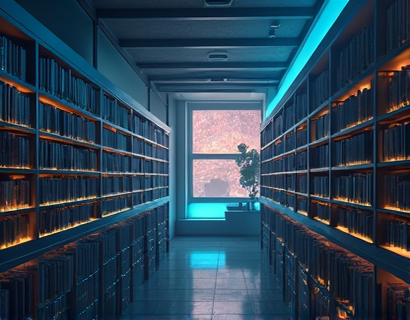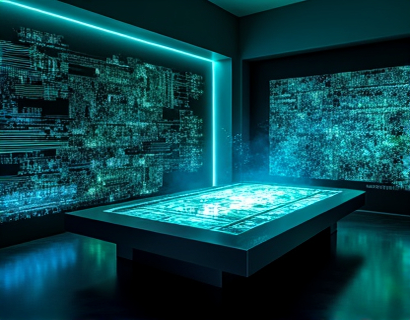Unlocking Egypt's Ancient Treasures: AI-Driven Insights and Authentic Artifact Shopping
The land of the pharaohs, Egypt, is a treasure trove of ancient history and culture, captivating the imagination of people around the world. From the majestic pyramids of Giza to the intricate hieroglyphs that adorn the walls of tombs and temples, Egypt's heritage is a testament to a civilization that thrived over thousands of years. In recent years, the integration of artificial intelligence (AI) has opened new avenues for exploring and understanding this rich legacy. This article delves into how AI is revolutionizing our insights into ancient Egypt and offers a curated selection of authentic Egyptian artifacts for those who wish to own a piece of this timeless history.
AI-Driven Archaeological Discoveries
The application of AI in archaeology has transformed the way researchers uncover and interpret ancient sites. Machine learning algorithms can analyze vast amounts of data, identifying patterns and anomalies that might go unnoticed by human eyes. In Egypt, AI has been instrumental in mapping and analyzing the extensive network of underground tunnels and chambers beneath the pyramids. For instance, AI-powered ground-penetrating radar has helped archaeologists pinpoint potential areas of interest without the need for extensive excavation, preserving the integrity of these ancient sites.
One notable project involves the use of AI to analyze satellite imagery and aerial photographs to detect subtle changes in the landscape that could indicate hidden structures. This technology has led to the discovery of previously unknown tombs and temples, providing fresh insights into the layout and design of ancient Egyptian cities. The precision and efficiency offered by AI tools have accelerated the pace of archaeological research, allowing for more comprehensive studies of Egypt's ancient landscapes.
Digital Reconstruction of Historical Sites
AI is not only aiding in the discovery of new sites but also in the digital reconstruction of ancient Egypt. Through advanced 3D modeling and virtual reality (VR) technologies, researchers can recreate historical sites with remarkable accuracy. These digital reconstructions allow historians and the public to explore ancient Egypt in a way that was previously impossible. For example, the virtual reconstruction of the Temple of Karnak provides an immersive experience, enabling visitors to walk through the temple's halls and columns as they existed centuries ago.
These digital models are not just for academic purposes; they serve as educational tools for students and enthusiasts worldwide. By interacting with these virtual environments, learners can gain a deeper understanding of the architectural and artistic achievements of ancient Egypt. The ability to manipulate and explore these reconstructions in real-time enhances the learning experience, making history more accessible and engaging.
AI in Artifact Authentication
The authenticity of Egyptian artifacts is a critical concern for collectors, museums, and researchers. AI technologies are playing a pivotal role in verifying the authenticity of these treasures. Machine learning algorithms can analyze the material composition, stylistic features, and historical context of artifacts to determine their genuineness. This is particularly important for artifacts that have been subject to forgery or have uncertain provenance.
One application of AI in authentication involves the analysis of inscriptions and hieroglyphs. By comparing the text on a suspected artifact with known examples, AI can identify inconsistencies or anomalies that may indicate a forgery. Additionally, AI can examine the wear and tear patterns on artifacts, as well as the patina and other signs of age, to assess their authenticity. This technology provides a reliable and objective method for verifying the legitimacy of Egyptian artifacts, ensuring that only genuine pieces reach collectors and institutions.
Curated Collection of Authentic Egyptian Artifacts
For those who are passionate about owning a piece of Egypt's rich history, a curated collection of authentic artifacts offers a unique opportunity. These items are carefully selected and verified for authenticity, ensuring that each piece is a genuine representation of ancient Egyptian culture. From delicate jewelry to intricate pottery, these artifacts provide a tangible connection to a civilization that has fascinated the world for millennia.
The selection includes a range of items, each with its own story and historical significance. For instance, a beautifully crafted golden ankh, a symbol of eternal life, can serve as a powerful reminder of the spiritual beliefs of the ancient Egyptians. Similarly, a set of ceramic vessels from the New Kingdom period offers insight into the daily life and trade practices of the time. Each artifact is accompanied by detailed descriptions and historical context, enhancing the owner's understanding and appreciation of the piece.
Jewelry and Adornments
The ancient Egyptians were renowned for their exquisite jewelry, which often held both aesthetic and symbolic value. A curated selection might include a pair of golden earring pendants shaped like scarabs, the sacred beetle associated with rebirth and regeneration. These earring pendants are crafted with precision and attention to detail, reflecting the high level of skill possessed by ancient Egyptian jewelers. Another piece could be a necklace featuring lapis lazuli and carnelian beads, materials that were highly prized for their beauty and perceived mystical properties.
Pottery and Household Items
Pottery and household items provide a glimpse into the daily lives of ancient Egyptians. A collection might feature a set of ceramic storage jars from the Middle Kingdom, adorned with hieroglyphic inscriptions that offer insights into the texts and beliefs of the time. These jars not only served practical purposes but also carried symbolic meanings, often related to fertility and abundance. Additionally, a selection of alabaster vessels, known for their translucent quality and durability, could be included. These vessels were used for storing perfumes and other valuable substances, reflecting the sophistication of ancient Egyptian craftsmanship.
Religious Artifacts
Religion played a central role in ancient Egyptian society, and many artifacts reflect this profound spiritual dimension. A curated collection could include a small stone statue of the god Anubis, the deity associated with mummification and the afterlife. Such statues were often placed in tombs to protect the deceased and guide them through the underworld. Another piece might be a fragment of a temple relief depicting the pharaoh making offerings to the gods, showcasing the intricate artistry and religious significance of these works.
These artifacts not only serve as decorative items but also as educational tools, providing a deeper understanding of the religious and cultural practices of ancient Egypt. Owning such pieces allows enthusiasts to connect with the past in a meaningful way, bringing a piece of history into their homes.
The Future of AI in Egyptology
As AI technology continues to advance, its role in Egyptology is poised to become even more significant. Future developments may include more sophisticated algorithms for analyzing and interpreting complex archaeological data, as well as enhanced VR experiences that simulate ancient environments with unprecedented realism. The integration of AI with other emerging technologies, such as drones and robotics, will further expand the possibilities for exploration and preservation of Egypt's ancient sites.
Moreover, AI can play a crucial role in making Egypt's cultural heritage more accessible to a global audience. Online platforms and virtual museums powered by AI can provide interactive and immersive experiences, allowing people from all over the world to explore and learn about ancient Egypt. This democratization of knowledge ensures that the wonders of Egypt's past are preserved and shared for generations to come.
Conclusion
The combination of AI-driven insights and authentic artifact shopping offers a comprehensive and enriching experience for those interested in ancient Egypt. Whether you are a history enthusiast, a student, or a collector, the resources available through this platform provide a deep dive into the mysteries and marvels of one of the world's most fascinating civilizations. By embracing these technologies, we can continue to unlock the secrets of ancient Egypt and celebrate its enduring legacy.











































